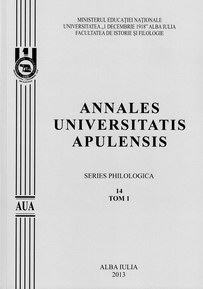Sincronism-protocronism: două feţe ale aceluiaşi proces?
Synchronicity-Protochronism: Two Dimensions Of The Same Process?
Author(s): Corina Maria MarinSubject(s): Cultural Essay, Political Essay, Societal Essay
Published by: Universitatea »1 Decembrie 1918« Alba Iulia
Keywords: synchronicity; protochronism; ideology; polemics; modernists; traditionalists; opposition
Summary/Abstract: The 70s and 80s of the twentieth century are, in the field of literature, some of the most important decades in the modern history of Romania, through papers published during this period, but also because in these years there is a public confrontation between ideologies and trends. These decades, the confrontation between the writers of right and the left political beliefs, the nationalists and internationalists, between tradition and innovation, conservatism and experimentalism, continues. One side of this confrontation was the debate on protochronism, concept that encouraged critics and literary historians to seek evolutions in the Romanian culture, that anticipated other events in the more widespread culture of Western Europe. In order to talk about protochronism it is absolutely necessary to talk also about synchronicity, as Edgar Papu, the creator of the concept, states that he defined it as pair of this, facet of a complex phenomenon. Recent studies consider protochronism as a manifestation of national ideology under Ceausescu and also a struggle for some form of cultural authority. Based on the context of the ideological confrontations of the 70s, we propose engaging in a critical research, focusing on the reactivation of aesthetic modernism versus its blocking in ideological opposition by bringing to the fore the fundamental studies of E. Lovinescu about synchronicity and Edgar Papu about protochronism, accompanied by aesthetic and ideological interventions launched in the literary press of 70s and 80s around these attempts to recover the Romanian aesthetic canon. As protochronism is considered in relation to Lovinescu’s theory on synchronicity, the debates engaged representatives of both sides. In a normal context, the literary debate would have been a natural one, but in a totalitarian regime, in which they wanted to subordinate literature to politics, these clashes have deepened; the term synchronicity came to be narrowed and associated to blind imitation new that hinders the revival of national culture consciousness, while protochronism becomes party’s ideology synonymous with nationalism and appreciation of local culture.
Journal: Annales Universitatis Apulensis. Series Philologica
- Issue Year: 14/2013
- Issue No: 3
- Page Range: 57-70
- Page Count: 14
- Language: Romanian

